
Lot 24

A RARE MAMLUK COMB MADE FOR AN EMIR
EGYPT, CAIRO, 13TH/ 14TH CENTURY
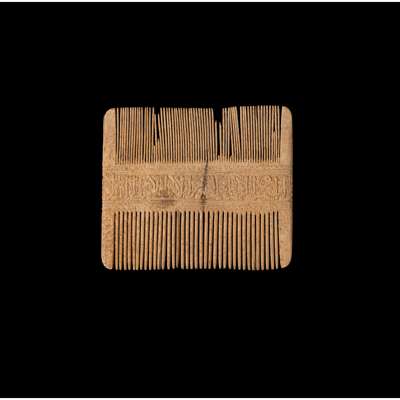
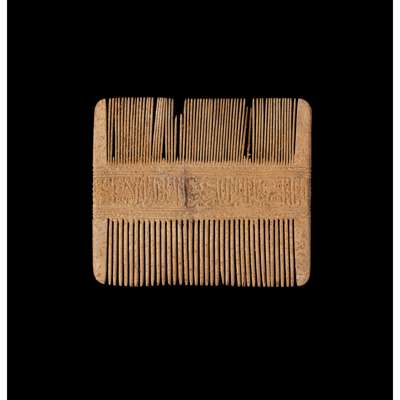
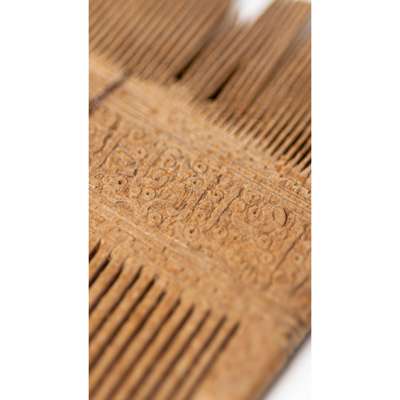
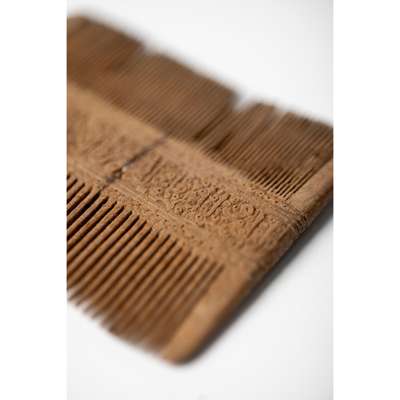


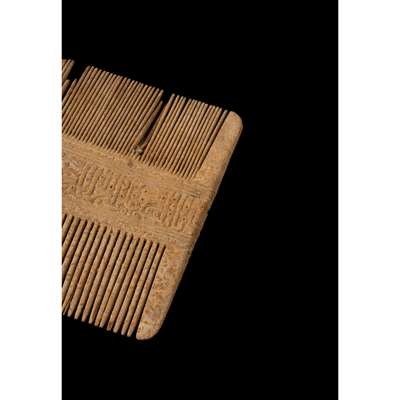

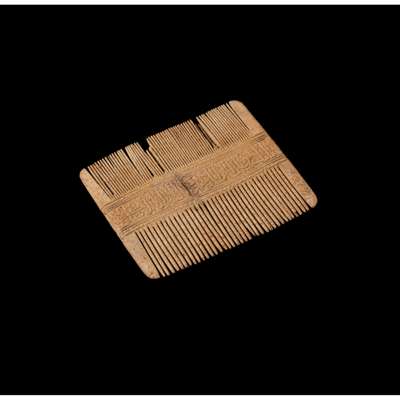


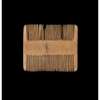
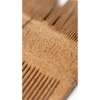
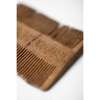
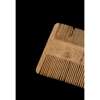
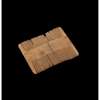

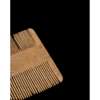
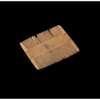
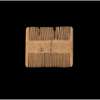
Auction: 10 December 2025 from 14:00 GMT
Description
carved wood of rectangular form, with teeth on either end, the central panel decorated in relief with a line of cursive Arabic script, decorated with small circles
Dimensions
8.2cm x 7.3cm
Provenance
Acquired from a UK regional auction house in October 2017; by repute, from a private collector who specialised in Islamic art.
Footnote
Combs, such as this rare example, symbolise the nexus between beauty and function in Islamic art. They are at once practical objects which played an essential part in personal hygiene and adornment but are also themselves adorned with fine calligraphy which permits them to ‘speak.’ As with other combs produced in the Mamluk period, this example has two sets of teeth; the thicker to detangle and unkink hair, and the thinner for removing lice, dirt, and other residues. Cleanliness is described as ‘half of faith’ in one hadith, and such religious exhortations to self-care went hand in hand with the exigencies of life in a bustling medieval metropolis such as Cairo, creating a market for combs and other toiletries which were also beautiful (C. Gruber and A. Dimmig, Pearls of Wisdom: The Arts of Islam at the University of Michigan, Kelsey Museum of Archaeology, 2014, pp. 7-8). The Mamluk-era Egyptian historian al-Maqrizi stated that there was an entire market given over entirely to the sale of combs (the suq al-amshatiyyin) located in what was then the very centre of Cairo between the Madrasa al-Salihiyya and the gold market (A. ‘Abd ar-Raziq, “Les peignes égyptiens dans l'art de l'Islam” in Syria, T. 49, Fasc. 3/4 (1972), pp. 411-12).
The central panel of this comb carries verses on both sides written in the first person: ana taj ‘ala al-jabin amma […] min al-nazar/[…] al-shams wa’l-qamar mimma ‘umila bi-rasm al-amir al-ajall al-kabir […] (‘I am a crown on the forehead but… from the glance/… the sun and the moon. From what was made by order of the glorious amir, the great…’). This description both highlights the comb’s status as a luxury item and refers to its purpose, while mentioning an unnamed but clearly important patron. The terminology used for the amir’s titles is distinctly Mamluk, as is the fluid cursive inscription, and appears to confirm the 14th century dating for the comb suggested by others in museum collections worldwide.
Although most surviving Mamluk combs are inscribed with only simple blessings or short phrases, one example in the Museum of Islamic Art Cairo is inscribed with similarly self-referential lines reading ‘I am a comb for the hair/I am for nothing but beauty’ (A. ‘Abd ar-Raziq, ibid., p. 407). Although there do not appear to be any which name an amir in the inscription, one incomplete comb in the Bibliothèque nationale de France (inv. no. 1970.374.7) states that it was made ‘for the lady of the raised veil’, suggesting that it was made for a woman with familial connections to the Mamluk elite (A. ‘Abd ar-Raziq, ibid., pp. 400-01 no.2). Others, while not carrying a specific name, bear the blazons which were distinctive markers of rank in the Mamluk empire, suggesting that they were made either for specific Mamluks or their retinues. One with a fleur-de-lys is in the Museum of Islamic Art Cairo (inv. no. 1/ 3957) (L. A. Mayer, Saracenic Heraldry, Sandpiper Books, 1997 (reprint), pl. V no. 5), and a fragmentary unpublished example in the British Museum (inv. no. OA+.2310) carries the emblem of the jamdar (Master of the Robes). The present example, however, is apparently unique in its combination of poetry and specific mention of a patron.
In terms of the inscription and decoration, the closest comparable comb is in the Metropolitan Museum of Art (inv. no. 38.118.17), which is attributed to 13th century Egypt. This features a very similar (albeit much shorter) cursive inscription, as well as the distinctive drilled concentric circles used to decorate the present example (A. Schimmel, "Islamic Calligraphy" in Metropolitan Museum of Art Bulletin, n.s., vol. 50, no. 1 (Summer 1992), pp. 23, 26 fig. 31).



















